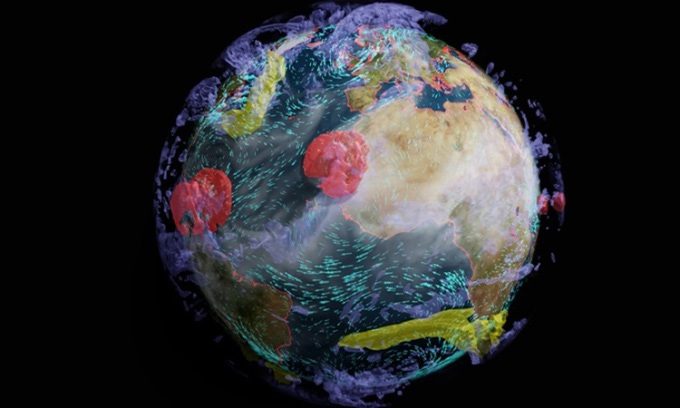Scientists Create a “Digital Twin” of Earth, Capable of Predicting Weather Much Faster Than Conventional Services.

Earth-2 can provide real-time weather predictions within seconds. (Photo: Nvidia).
The Supercomputer System Developed by Nvidia, a multinational company that produces graphics processing units (GPUs), uses high-speed mathematical equations to enable machine learning, a form of artificial intelligence (AI), reported Live Science on April 16. The platform, named Earth-2, contains a suite of machine learning technologies developed by Nvidia and powered by a supercomputer, providing the necessary processing capabilities to perform tasks. Together, they create an “virtual replica of a real object or system, in this case, Earth’s climate.” Dion Harris, the product marketing director for data centers at Nvidia, stated.
The system features an interactive interface that runs simulations of weather and climate across the globe, allowing users to set various parameters to simulate weather in different locations with detail levels down to 2 kilometers. The AI technology is trained using global datasets, providing estimates of climate changes in land, atmosphere, and oceans. According to Harris, this system synthesizes hundreds of observations and reconstructs Earth’s weather and climate over the past 50 years.
Thanks to comprehensive training, the AI can quickly analyze vast amounts of weather and climate data, generating thousands of potential outcomes and ultimately calculating the probability of weather conditions at specific locations. When confronted with weather systems that can threaten human lives and cause millions of dollars in damage, Nvidia’s system can provide real-time predictions within seconds rather than minutes or days. This could be a life-saving difference in locations like Taiwan, which frequently experiences severe storms.
“When a storm warning is issued, the top priority is to minimize casualties by conducting early evacuations,” Harris said. For this reason, Taiwan’s weather agency is one of the first organizations to test the Earth-2 system for forecasting and planning responses to extreme weather events this year.
The Earth-2 supercomputer can quickly sift through massive amounts of data to create accurate predictive simulations. This capability can help cities explore the possibilities and intensity of extreme weather, such as future heat waves, enabling them to implement measures to mitigate impacts.


















































